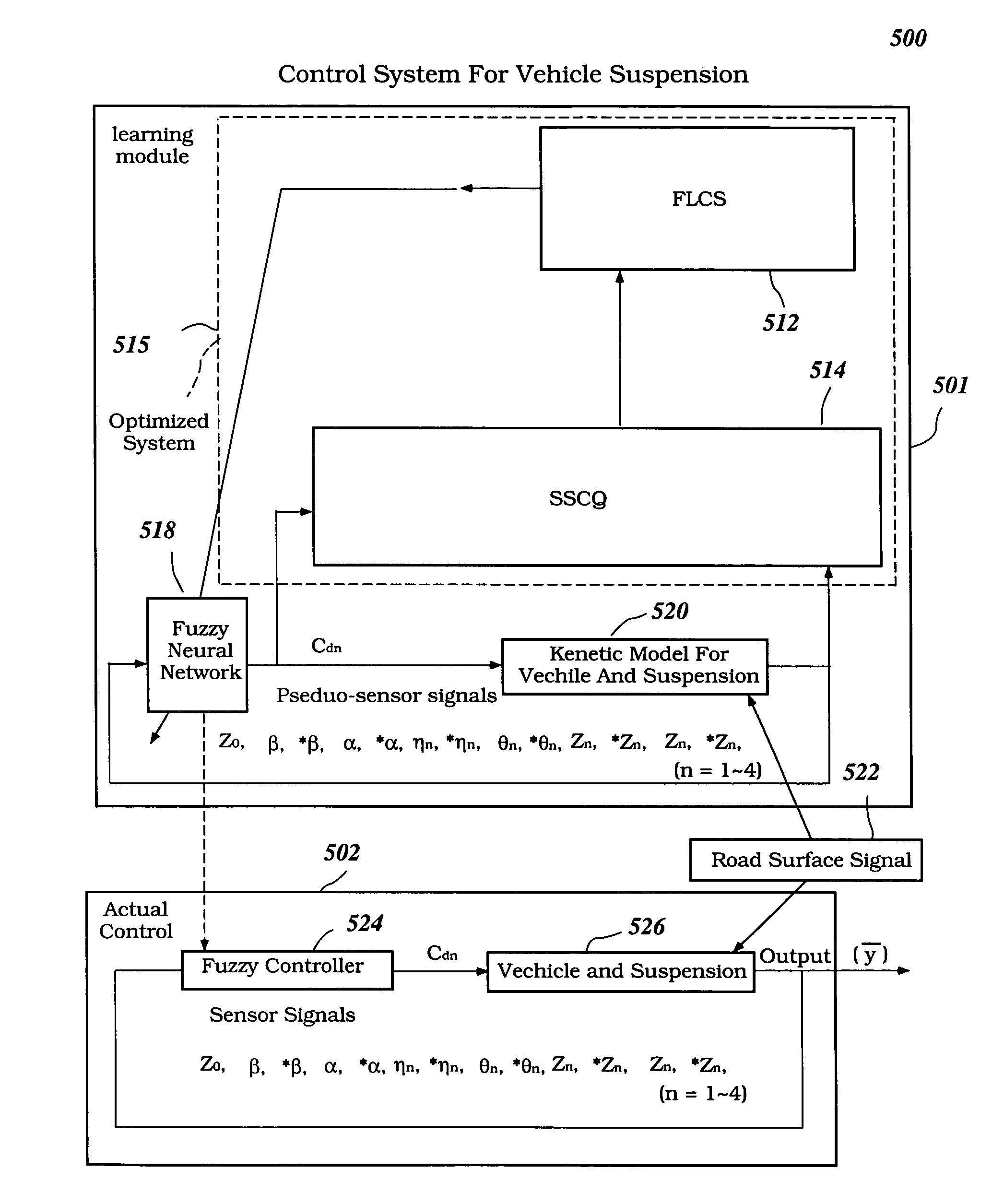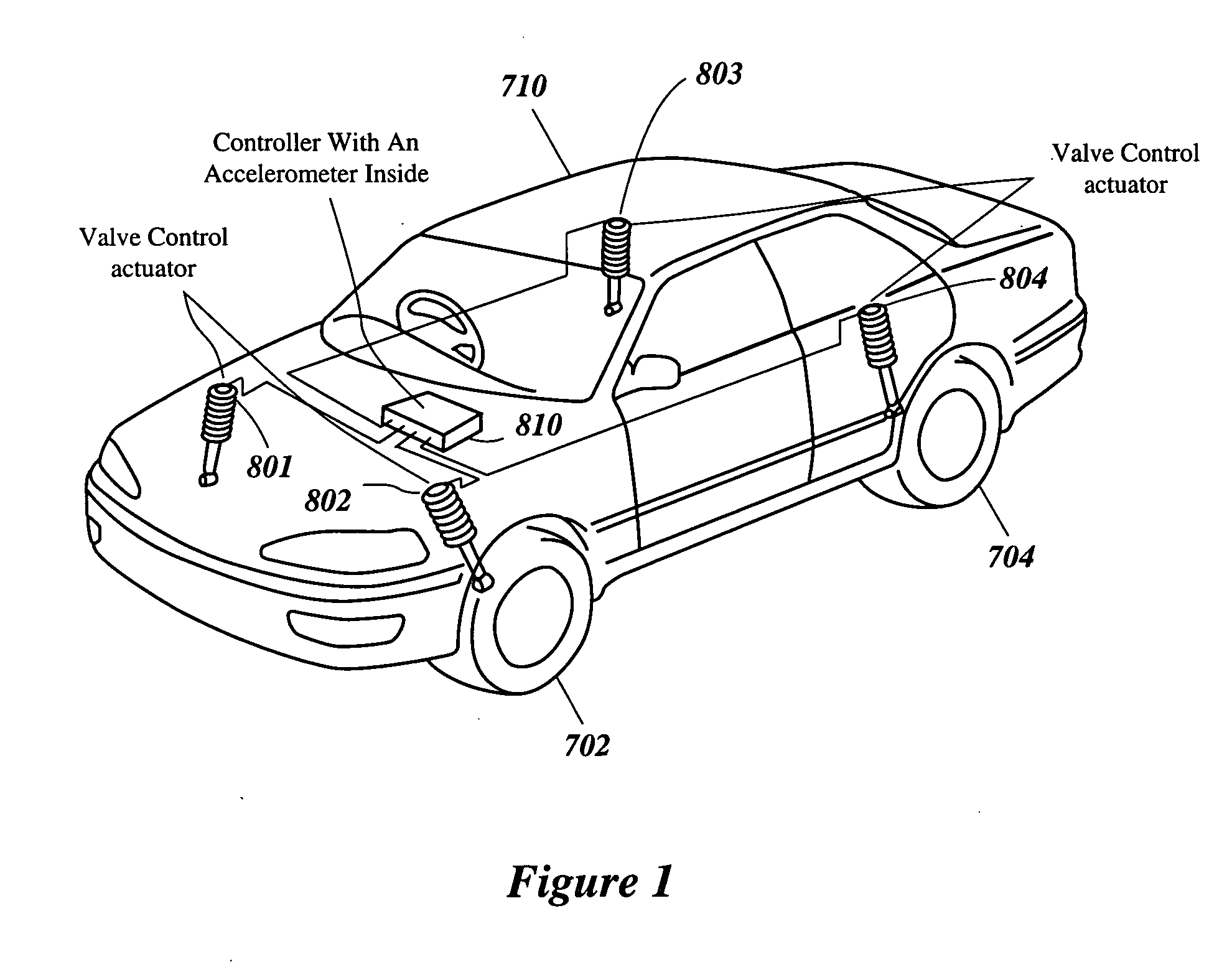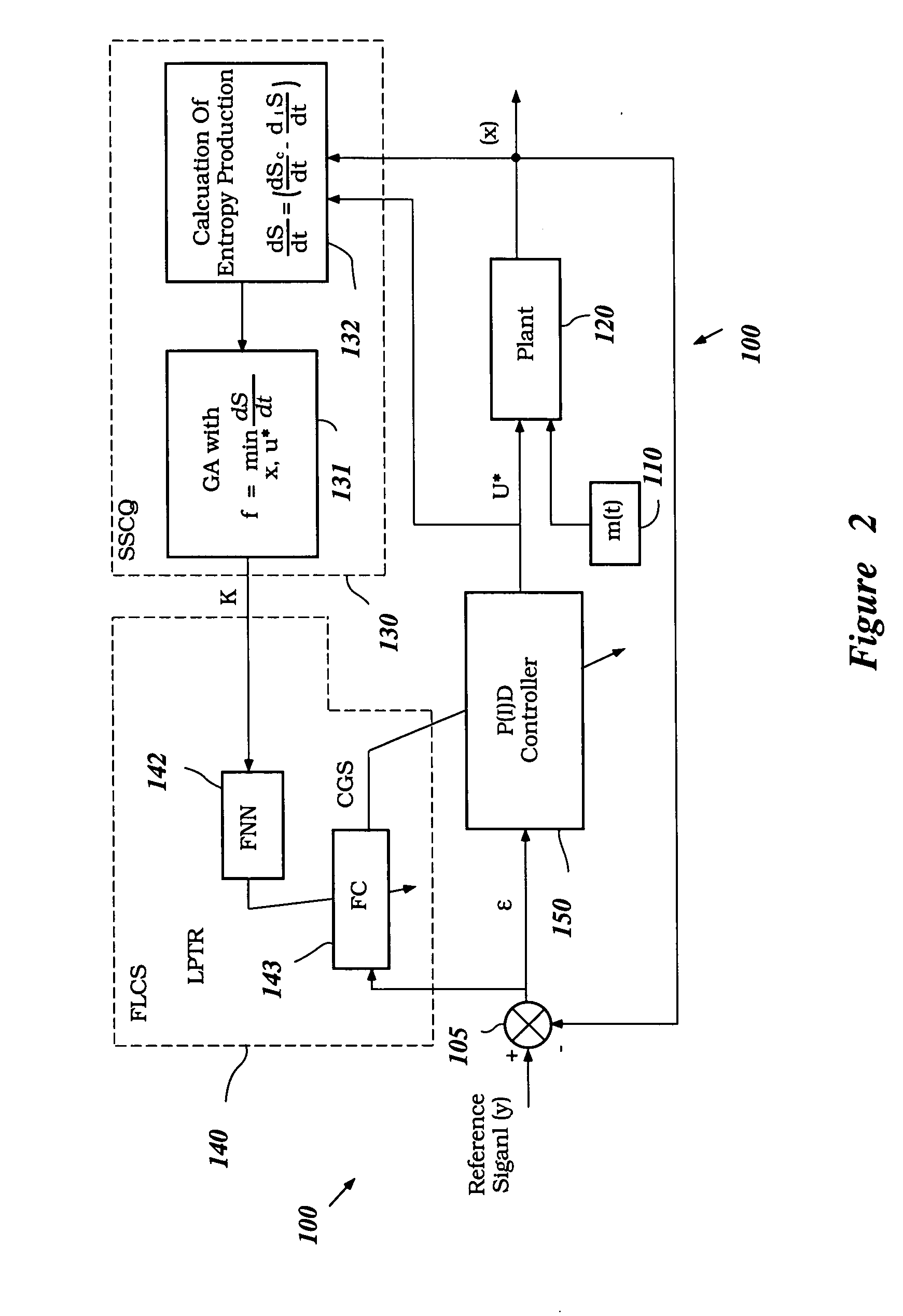Intelligent electronically-controlled suspension system based on soft computing optimizer
a technology of soft computing and electronic control, applied in the direction of cycle equipment, distance measurement, instruments, etc., can solve the problems of high nonlinearity, unstable, and many real-world suspension systems, such as vehicle suspension systems, and achieve the effect of near-optimal fnn
- Summary
- Abstract
- Description
- Claims
- Application Information
AI Technical Summary
Benefits of technology
Problems solved by technology
Method used
Image
Examples
Embodiment Construction
[0097]FIG. 1 shows a vehicle with an electronically-controlled suspension system. The vehicle in FIG. 1 includes a vehicle body 710, a front left wheel 702, a rear left wheel 704 (a front right wheel 701 and a rear right wheel 703 are hidden). FIG. 1 also shows dampers 801-804 configured to provide adjustable damping for the wheels 701-704 respectively. In one embodiment, the dampers 801-804 are electronically-controlled dampers. In one embodiment, a stepping motor actuator on each damper controls an oil valve. Oil flow in each rotary valve position determines the damping factor provided by the damper.
[0098] In one embodiment, the adjustable dampers 801-804 each have an actuator that controls a rotary valve. In one embodiment, a hard-damping valve allows fluid to flow in the adjustable dampers to produce hard damping, and a soft-damping valve allows fluid to flow in the adjustable dampers to produce soft damping. The actuators control the rotary valves to allow more or less fluid t...
PUM
 Login to View More
Login to View More Abstract
Description
Claims
Application Information
 Login to View More
Login to View More - R&D
- Intellectual Property
- Life Sciences
- Materials
- Tech Scout
- Unparalleled Data Quality
- Higher Quality Content
- 60% Fewer Hallucinations
Browse by: Latest US Patents, China's latest patents, Technical Efficacy Thesaurus, Application Domain, Technology Topic, Popular Technical Reports.
© 2025 PatSnap. All rights reserved.Legal|Privacy policy|Modern Slavery Act Transparency Statement|Sitemap|About US| Contact US: help@patsnap.com



